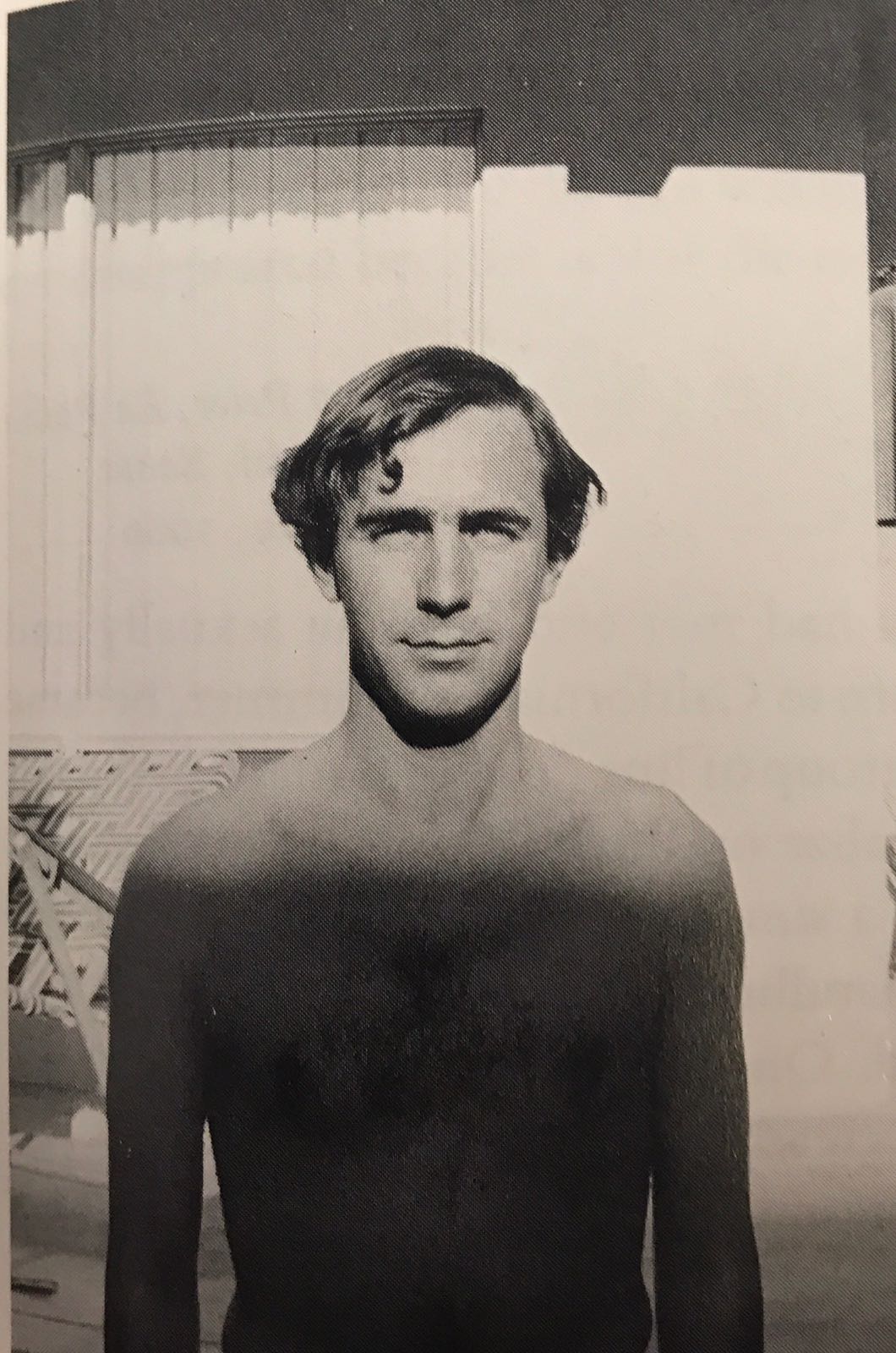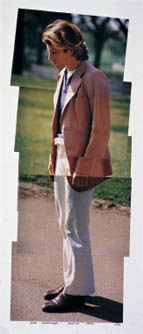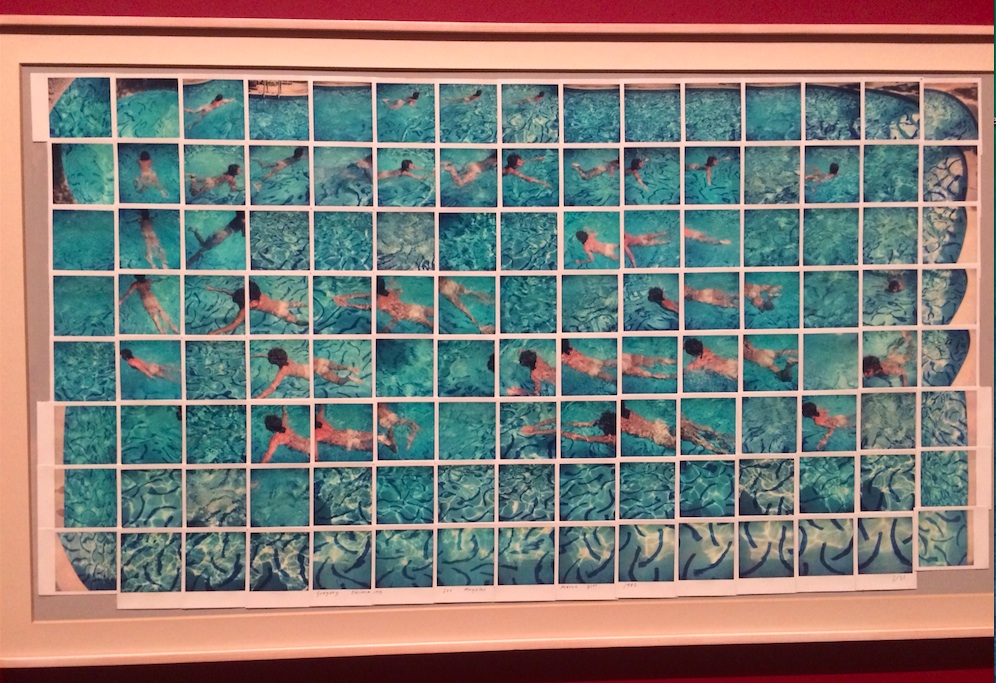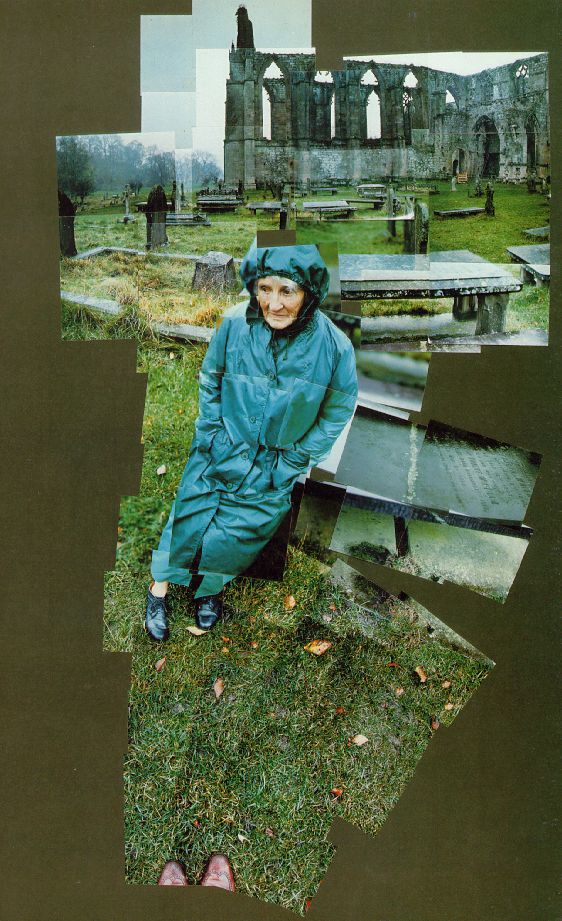Difference between revisions of "Adding Pigment"
From Londonhua WIKI
Akgiacoman (talk | contribs) |
Akgiacoman (talk | contribs) |
||
| Line 85: | Line 85: | ||
<br><br> | <br><br> | ||
<gallery mode="packed"> | <gallery mode="packed"> | ||
| + | Image:DH01.jpg|''Nick Wilder, 1966. Color photograph from a 35 mm negative taken by Mark Lancaster'' | ||
Image:DH00.jpg|''Portrait of Nick Wilder, 1966. Acrylic on canvas, 72x 72 by David Hockney'' | Image:DH00.jpg|''Portrait of Nick Wilder, 1966. Acrylic on canvas, 72x 72 by David Hockney'' | ||
| − | Image: | + | Image:DH02.jpg|''Peter, Kensington Gardens, April 1972. Composite color photograph taken from 35 mm negatives'' |
| − | Image: | + | Image:DH03.jpg|''Le Nid Du Duc, April 1972. Color photographs from 35 mm negatives'' |
| − | + | Image:DH04.jpg|''Portrait of an Artist (Pool with two figures), 1972. Acrylic on canvas, 84 x 120. Private Collection, United Kingdom.'' | |
| − | Image:DH04.jpg|'' | ||
Image:DH05.jpg|''Caption 4'' | Image:DH05.jpg|''Caption 4'' | ||
Image:DH06.jpg|''Caption 4'' | Image:DH06.jpg|''Caption 4'' | ||
Revision as of 14:00, 5 June 2017
Contents
[hide]Adding Pigment
by akgiacoman & sreyes
 Your Project Page Picture Caption |
Abstract
"A London Full of Colour" is a project that aims to portray a different reality of the daily life of London citizens. By picturing different scenarios in their reality comparing them to the reality that I choose for each one of them, the audience will be able to admire the beauty and uniqueness of the city from a different perspective. I have gone to international poetry competitions and taken painting and photography courses before arriving to college. This project will combine my favorite forms of expression through art and hopefully brighten the days of the viewers. The main message I wish to convey is that every single one of us chooses the reality they want to live in, meaning that the same place could be seen as a prison for our souls or a wonderland for our imagination. The goal of this Milestone, however, is to paint five acrylic surrealistic paintings of the most emblematic sites in London exaggerating the use of bright colors instead of the usual gray palette that is seen due to the weather.
Introduction
As you continue to think about your project milestones, reread the "Goals" narrative on defining project milestones from the HU2900 syllabus. Remember: the idea is to have equip your milestone with a really solid background and then some sort of "thing that you do". You'll need to add in some narrative to describe why you did the "thing that you did", which you'd probably want to do anyway. You can make it easy for your advisors to give you a high grade by ensuring that your project milestone work reflects careful, considerate, and comprehensive thought and effort in terms of your background review, and insightful, cumulative, and methodical approaches toward the creative components of your project milestone deliverables.
Section 1: Background
Artistic Component
Despite the widespread social anxiety caused by the fog, many artists found in it a source of inspiration from a wide broad of perspectives. For some fog represented a looming presence, alive and malignant.[1] The majestic London soon became a city where "no beautiful thing, on which art and trouble has been bestowed, can long keep its beauty"[2].
Artists From the Past
Being a city immersed in its own history, London has seen a lot happening through its streets, and digging in the past, it is easy to find a more gloomy, mysterious and heavy perspective of the fog, enraptured in all kinds of art. The following representatives were chosen because of their imminent and irrefutable success in their disciplines.
Monet
Art
Charles Dickens
Literature
Fred Morley
Photography
Sir Christopher Wren
Architecture
Artists from the present
In more contemporary times, leaving behind the dense, yellow and deadly fog as an everyday scene, London is a setting that enraptures less mystery and more and more magic. More color and a wider variety of emotions are displayed in all forms of art.
Pete Rumney
Art
J.K. Rowling
Literature
David Hockney
 |
David Hockney is an English painter, printmaker, stage designer and photographer and one of the most important figures in modern art. He was born on July 9th 1937 in the center of England's wool trade, with a population of 300,000; the city of Bradford in West Yorkshire. The city had been immortalized as "Bruddersford"in the popular imagination of J. B. Priestley in his best-selling novels "The Good Companions" and "Bright Day". In the last one he wrote, "Bruddersford is generally held to be an ugly city; and so I suppose it is; but it always seemed to me to have the kind of ugliness that could not only be tolerated but often enjoyed". [3] And the thing was that Bradford was immersed in the damp smog of those years "for the two hundred or so chimneys of the woollen mills were belching out fumes all day, which sank slowly into the basin in which the city lies, and made Bradford then one of the smokiest cities on earth".[4]. Since Hockney was 10 years old he knew he wanted to be an artist and he used to enter painting and drawing competitions for children that used to appear regularly in the Daily Express. His parents always encouraged him with his love for art and he would always appeared to be the most cheerful of his other four siblings. He was also very inspired by his English teacher Kenneth Grose, who recognized that, in spite of his inability to work hard in anything but art, he was full of curiosity "He was a stimulant and he encouraged me in my ambitions to be an artist". [5]
Basic to David Hockney's art has always been the need to communicate directly with the viewer. Hockney is not at all involved in the creation of beauty as an end in itself. It is exactly this didactic urgency, this need to be heard plainly and to be understood clearly, which is the basis of his phenomenal popularity. No other artist today has been the subject of so many books, most of them generated by the prodigious flow of his own art, work that he produces in abundance and with great care. [6]Hockney is widely known for his adaptability and his ability to create new techniques using the emerging technologies. In photography, specifically he turned to “recreate photography” in a way in which, as he said, “a photograph that could be described as having a strong illusion of reality”. In the second volume of his biography written by Christopher Simon Skyes, he explains that in a point of his life, he started to feel that photography was missing something, and so he decided to add his personal touch to it, starting to do picture collages. “The main aspect was this lack of time in the photograph. I'd become very, very aware of this frozen moment, that was very unreal to me. Photography didn't really have life in the way a drawing or painting did, and I realized it couldn’t because of what it is. compared to Rembrandt looking at himself for hours and hours and scrutinising his face, and putting all these hours into the picture you're going to look at, naturally there's many more hours there than you can give it. A photograph is the other way round. It's the fraction of a second, frozen, so the moment you looked at it for even four seconds, you've looked at it for longer than the camera did. It dawned on me that this was visible, actually, and the more you become aware of it, the more this is a terrible weakness. Drawings and paintings do not have this." [7]Though Hockney does not have a great number of photographies of London itself, he has been one of the most influential and innovative British artists for the past half a century. He developed a way to give a story to his images, instead of just leaving them as a single photograph. Through his collages, he adds identity to his characters and is able to transmit emotions and ideas, creating a reality for each one and showing it to its viewers. His photography comes to life as he pushes the boundaries of figurative art and inspires many other creators as himself.
Ken Shuttleworth
Architecture
Section 2: Deliverable
Using David Hockney's technique of "Painting with Pictures", we chose one picture of each site described in the Milestone Colourless London and we made them into paintings, emphasizing the use of bright colors and making an imminent contrast with the pictures' monochromatic feel.
Gallery
Conclusion
In this Milestone, artists from the past and from the present are compared and contrasted. There is one artist chosen for each of the fields involved in the project "A London Full of Colour"; Painting, Literature, Photography and Architecture. The intention was to outline the main differences in their styles and how they each one of them portrayed London from their very own perspectives and translated it into their works of art. In the same way, biographical facts are provided to give the reader a reference of how life circumstances and setting might have also been influential in the artists' work. This Milestone is the linking point between Courless London and Colourful Reality, giving meaning to the rest of the project "A London Full of Colour".
Finally, for the deliverable, our own work is presented and with is we intend to show our own perspective of London, which, though it contrasts with the pictures taken in Colourless London in an extreme way. We tried to add some pigment of our own to create a much more Colourful Reality for ourselves. The paintings emphasize the use of colors in a symbolic way, what they represent are our different emotions and life experiences that stoke our lives, sometimes in unexpected ways, but always resulting in a breath taking outcome. Life is our very own masterpiece, it is what we make it and it is not in the very least monochromatic. In the contrary, all the aspects of our lives merge to create a unique work of art, that certainly might not be of everyone's liking, but then again, the only opinion that truly matters is that of the artist that made the masterpiece. In some occasions, such as with Mr. Shuttleworth, the artist regrets the path he or she took and if given a second chance, would have done things differently. However, the work is done, the masterpiece is complete, and we can either live in regret or move forward in such ways where each stoke is more precise and better thought than the previous one. Mr. Shuttleworth continues to be an excellent architect and though many people disagree with the way he feels about St. Mary Axe, he learned from that experience and moved forward to his next masterpiece. Some other artists die without the proper acknowledgment that their work deserves, however, what people think of their work can never influence the magnitude of its quality. A masterpiece, is a masterpiece even when there is no one to admire it and most things done with effort and passion are worth a standing ovation.
References
- Jump up ↑ CORTON, C. L. (2015). LONDON FOG: the biography. S.l.: BELKNAP HARVARD. pp 1.
- Jump up ↑ Anon., "The Empire's Capital", Review if Reviews, June 1900, p. 594.
- Jump up ↑ Bright Day, J. B. Priestley, Heinemann 1946
- Jump up ↑ Sykes, C. S. (2011). Hockney: The Biography (Vol. 1). London: Century, pp. 1-25
- Jump up ↑ Interview with David Hockney by Christopher Simon Skyes, June 2009
- Jump up ↑ Tuchman, M., & Barron, S. (1989). David Hockney: a retrospective. Los Angeles, CA: Los Angeles County Museum of Art, pp. 13
- Jump up ↑ Sykes, C. S. (2014). Hockney: The Biography (Vol. 2). London: Century, pp. 160
Attribution of Work
akgiacoman: Artistic Component, Charles Dickens, J.K. Rowling, Fred Morley, David Hockney & Conclusion
sreyes: Introduction, Monet, Sir Christopher Wren, Pete Rumney, Ken Shuttleworth
External Links
If appropriate, add an external links section
Image Gallery
If appropriate, add an image gallery









